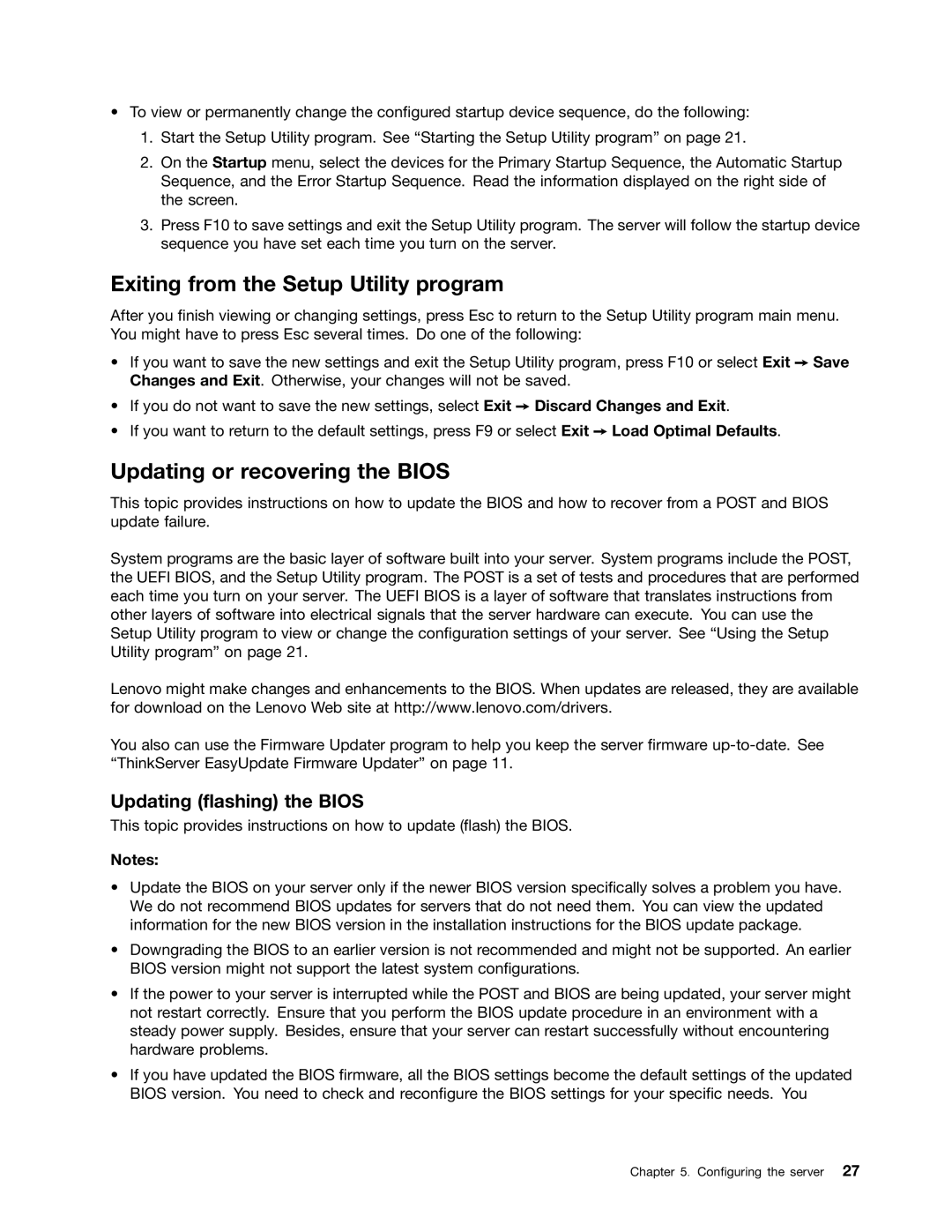•To view or permanently change the configured startup device sequence, do the following:
1.Start the Setup Utility program. See “Starting the Setup Utility program” on page 21.
2.On the Startup menu, select the devices for the Primary Startup Sequence, the Automatic Startup Sequence, and the Error Startup Sequence. Read the information displayed on the right side of the screen.
3.Press F10 to save settings and exit the Setup Utility program. The server will follow the startup device sequence you have set each time you turn on the server.
Exiting from the Setup Utility program
After you finish viewing or changing settings, press Esc to return to the Setup Utility program main menu. You might have to press Esc several times. Do one of the following:
•If you want to save the new settings and exit the Setup Utility program, press F10 or select Exit ➙ Save Changes and Exit. Otherwise, your changes will not be saved.
•If you do not want to save the new settings, select Exit ➙ Discard Changes and Exit.
•If you want to return to the default settings, press F9 or select Exit ➙ Load Optimal Defaults.
Updating or recovering the BIOS
This topic provides instructions on how to update the BIOS and how to recover from a POST and BIOS update failure.
System programs are the basic layer of software built into your server. System programs include the POST, the UEFI BIOS, and the Setup Utility program. The POST is a set of tests and procedures that are performed each time you turn on your server. The UEFI BIOS is a layer of software that translates instructions from other layers of software into electrical signals that the server hardware can execute. You can use the Setup Utility program to view or change the configuration settings of your server. See “Using the Setup Utility program” on page 21.
Lenovo might make changes and enhancements to the BIOS. When updates are released, they are available for download on the Lenovo Web site at http://www.lenovo.com/drivers.
You also can use the Firmware Updater program to help you keep the server firmware
Updating (flashing) the BIOS
This topic provides instructions on how to update (flash) the BIOS.
Notes:
•Update the BIOS on your server only if the newer BIOS version specifically solves a problem you have. We do not recommend BIOS updates for servers that do not need them. You can view the updated information for the new BIOS version in the installation instructions for the BIOS update package.
•Downgrading the BIOS to an earlier version is not recommended and might not be supported. An earlier BIOS version might not support the latest system configurations.
•If the power to your server is interrupted while the POST and BIOS are being updated, your server might not restart correctly. Ensure that you perform the BIOS update procedure in an environment with a steady power supply. Besides, ensure that your server can restart successfully without encountering hardware problems.
•If you have updated the BIOS firmware, all the BIOS settings become the default settings of the updated BIOS version. You need to check and reconfigure the BIOS settings for your specific needs. You
Chapter 5. Configuring the server 27
